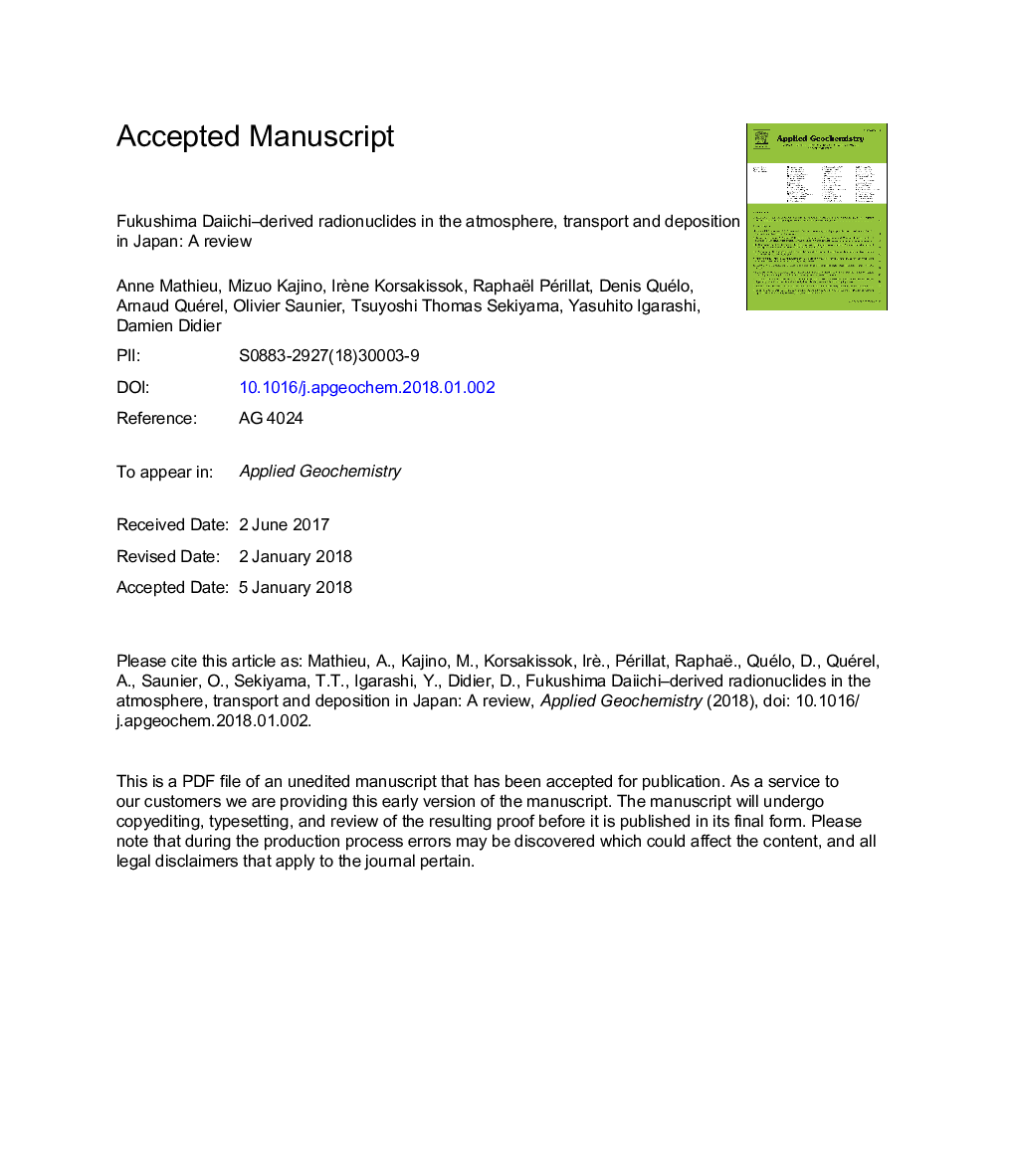| کد مقاله | کد نشریه | سال انتشار | مقاله انگلیسی | نسخه تمام متن |
|---|---|---|---|---|
| 8863158 | 1620200 | 2018 | 62 صفحه PDF | دانلود رایگان |
عنوان انگلیسی مقاله ISI
Fukushima Daiichi-derived radionuclides in the atmosphere, transport and deposition in Japan: A review
دانلود مقاله + سفارش ترجمه
دانلود مقاله ISI انگلیسی
رایگان برای ایرانیان
کلمات کلیدی
موضوعات مرتبط
مهندسی و علوم پایه
علوم زمین و سیارات
ژئوشیمی و پترولوژی
پیش نمایش صفحه اول مقاله

چکیده انگلیسی
The Fukushima Daiichi Nuclear Power Plant accident of March 11 2011 led to a significant release of radionuclides in the environment. More than 99% of the release activity in the atmosphere was due to highly volatile radionuclides such as I, Te, Cs, Xe, Kr. Fairly quickly after the accident, the main release events had been identified and their consequences roughly assessed. Most releases were dispersed over the Pacific Ocean whereas about 20% was dispersed over the Japan main highland causing areas of significant deposit. Since then, the understanding of the different episodes has been greatly enhanced. It is appropriate to review what happened in terms of releases into the atmosphere, transport, and deposition of radionuclides on the Japanese territory. We describe here, the current state of understanding of the release phase of the accident and the means used to achieve it. Numerous radiological measurements taken in the Japanese environment enabled the scientists to substantially reconstruct the four main sequences of contamination, to identify the probable trajectories of the radioactive plumes, and to link them with precipitation data to explain the areas of deposition. The measurements were supplemented by modelling techniques. The most significant progress come from the quantification of the atmospheric releases, the improvement of meteorological data to better take into account the influence of the complex orography on the plumes trajectories and the modelling of deposition processes. Notwithstanding more realistic simulations, progress is still to be made to accurately estimate people exposure due to the release phase of the FDNPP accident. An important result is that the bulk of the deposition was mostly generated at the beginning of the precipitation, by light rain in less than one hour. The scavenging of plume transported in altitude generates high deposition zones. Therefore, they do not necessarily match the zones within which inhalation exposure to the radioactive plumes was the largest.
ناشر
Database: Elsevier - ScienceDirect (ساینس دایرکت)
Journal: Applied Geochemistry - Volume 91, April 2018, Pages 122-139
Journal: Applied Geochemistry - Volume 91, April 2018, Pages 122-139
نویسندگان
Anne Mathieu, Mizuo Kajino, Irène Korsakissok, Raphaël Périllat, Denis Quélo, Arnaud Quérel, Olivier Saunier, Tsuyoshi Thomas Sekiyama, Yasuhito Igarashi, Damien Didier,